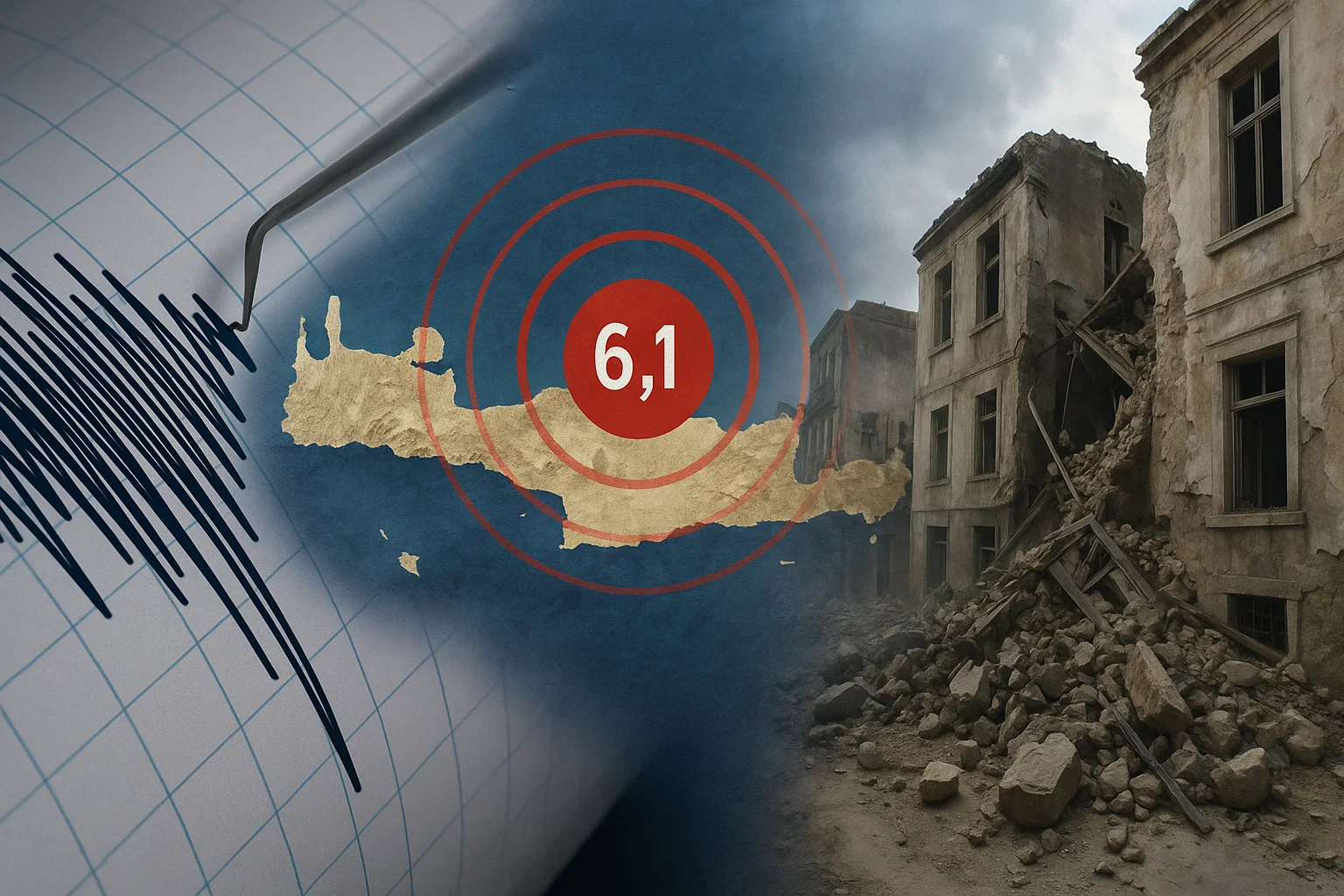Introduction: The Allure and Fury of the Aegean
The Greek islands, Seismic with their sun-drenched beaches and ancient ruins, have long captivated travelers. Yet beneath their idyllic surface lies a volatile geological reality. On Thursday, a 6.1-magnitude earthquake struck off the coast of Crete, reminding locals and visitors alike of the powerful forces shaping this iconic region. While the quake caused no casualties, its occurrence adds to a growing pattern of seismic activity that’s sparking conversations about safety, science, and resilience.
The Earthquake: Breaking Down the Key Facts
What Happened Seismic ?
According to the U.S. Geological Survey (USGS), the tremor occurred 82 kilometers northeast of Heraklion, Crete’s bustling capital, at a depth of 68 kilometers. The quake’s epicenter was situated in the Aegean Sea, close to Santorini—a hotspot for tourists seeking stunning sunsets and whitewashed villages. Though classified as “strong,” its depth likely mitigated widespread damage.
Aftershocks and Regional Impact
The tremor was part of a months-long “seismic swarm” that has rattled the Cyclades islands, including Santorini, Amorgos, and Anafi. Thousands of minor quakes have been recorded since January, leading to temporary school closures and heightened alertness among residents. Despite the frequency, most tremors have been low-magnitude, sparing the region from structural devastation.
Why the Aegean? The Science Behind the Shakes
A Tectonic Crossroads
The Aegean Sea sits at a geological crossroads, where the African tectonic plate collides with the Anatolian plate. This convergence creates constant friction, making the region one of Europe’s most seismically active zones. Earthquakes here are not just common—they’re inevitable.
A Rare Seismic Swarm
While quakes are frequent, the recent swarm stands out. Experts note that the area hasn’t seen activity of this scale since modern record-keeping began in 1964. The prolonged shaking has prompted debates among seismologists: Is this a precursor to a larger event, or simply the plates adjusting incrementally?
Tourism in the Tremor Zone: Seismic Balancing Beauty and Risk
Santorini’s Silent Streets
Santorini, famed for its cliffside villages and azure waters, saw schools temporarily shut as a precaution. For an island reliant on tourism—which accounts for over 90% of its economy—even minor disruptions can ripple through hotels, restaurants, and tour operators.
Traveler Concerns and Reassurances
Despite headlines, the Greek Tourism Ministry has emphasized that the islands remain safe. Most quakes are too deep or mild to affect daily life. However, travelers are advised to familiarize themselves with safety protocols, such as identifying sturdy structures and avoiding beaches during aftershocks (due to tsunami risks).
Looking Back: Crete’s Seismic History
The 365 AD Catastrophe
Crete’s relationship with earthquakes is ancient. In 365 AD, a massive quake estimated at 8.0+ magnitude triggered a tsunami that devastated Alexandria, Egypt. The event reshaped coastlines and left an indelible mark on Mediterranean history.
Modern-Day Close Calls
In 2021, a 5.8-magnitude quake near Heraklion damaged homes and injured several people. Fortunately, stricter building codes enacted after deadly 1999 quakes in Athens have improved resilience.
Staying Safe: Preparedness in Paradise
For Residents
Greek authorities conduct regular earthquake drills, particularly in schools. Infrastructure upgrades, including reinforced buildings and early warning systems, are ongoing priorities.
For Visitors
- Stay Informed: Download apps like Earthquake Alert! for real-time updates.
- Know Your Surroundings: Identify open spaces and solid furniture for shelter.
- Follow Local Guidance: Hotels often provide safety briefings for guests.
The Bigger Picture: Climate and Quakes?
While climate change doesn’t directly cause earthquakes, rising sea levels and shifting water pressure could influence tectonic stability over millennia. Researchers are exploring these connections, though the science remains speculative.
Conclusion: Resilience in the Land of Myths

The Greek islands are no strangers to nature’s unpredictability. From the volcanic eruption that birthed Santorini’s caldera to modern-day tremors, these landscapes are as dynamic as they are breathtaking. The recent 6.1-magnitude quake serves as a reminder of humanity’s fragile yet tenacious place within Earth’s grand tapestry. For now, life in Crete and its neighboring isles continues—vibrant, vigilant, and ever-resilient.










